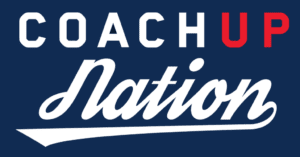Getting Recruited: Educate Yourself
In our previous recruiting article, we focused on the basics of the process and, hopefully, shed some light on what athletes and parents need to understand about the system as a whole. In this article, we will discuss how to navigate through the recruiting process, including how to gain exposure and what you need before you start contacting schools.
Get Smart Sooner, Not Later
Most athletes and parents understand that the earlier you can begin the recruiting process, the better. What many fail to realize is that the best place to start your recruiting journey is in the classroom. Simply put, better grades and test scores mean more doors will open for you. Every coach knows one thing for sure… you can only be a great player if you’re able to play! If coaches don’t have to worry as much about you gaining and maintaining your eligibility, pursuing you becomes a much easier decision.
Conversely, if a coach thinks you may be in constant academic trouble, it becomes much easier for them to pass you over. While it’s best to start thinking about academic reputation early, it’s never too late to improve. Showing improvement, even very late in your high school career, shows coaches that you have the ability and desire to get better. The simple fact that you made such an effort can greatly improve your stock as an athlete.
Get Noticed
While the most obvious way to market athletic ability is by performing in the sport itself, there are many other ways to help student-athletes gain exposure. Most sports have showcases, combines, or some other kind of system that allows athletes display their skills. Club or national competitions like USA Track & Field’s Junior Olympics provide great competitive venues where young athletes can get noticed. At camps and clinics, athletes can show their skills and often have the chance to interact with college coaches. As always, research your sport’s specific opportunities and talk to coaches, parents, and other athletes to find out what may work best for you.
While participating in the “what” be sure to remember the “who.” Everyone you meet is a potential resource. A camp instructor or club coach one year may very well be a collegiate coach the next. An athlete recruited by one program will often recommend other athletes to the staff. The point is, make sure you leave a strong, positive impression with everyone you can. The more people who remember you for the right reasons, the better.
Get To Work
Since recruiting rules often restrict how much personal contact you can have with coaches, be sure to reach out to colleges in other ways. Start by building a portfolio. Include basic stats (height, weight, GPA, etc.) as well as sport-specific details and a description of your academic goals. List teams you’ve competed for, honors you’ve received, and camps or combines you’ve attended. If you’ve had any media coverage, reference it or include a clipping. Highlight community involvement or volunteer work you participate in, or positions you hold in school or community organizations. The goal is to give the person viewing your portfolio a sense of who you are academically, athletically, and socially.
In addition to your written portfolio, highlight videos are often very valuable. Ask a coach to help you pick and edit together some highlights to send along with your portfolio. You can even use a free video hosting website to post the video and include the web address in your portfolio. If you don’t have much video, ask someone to record a workout, practice, or scrimmage. Social media or personal websites can also provide a great platform for exposure and networking provided they are used correctly and cautiously. You can use them to host your portfolio and videos, and can easily update them with new information, statistics, or honors.
Huddle Up
After you have your portfolio completed, start contacting schools that fit your needs. Never assume that coaches will find you on their own. No program has the resources to attend every camp or tournament in the country, so realize that they can’t recruit you if they don’t know about you. A great way to start is by contacting your regional schools, and branching out from there. Most college athletics websites have a “Recruit Me” or “Prospective Athlete Questionnaire” link for each sport, so begin there. While you are on the website, send an email to the coaching staff to introduce yourself. Stay persistent, don’t be afraid to open a dialogue with anyone, and always remember that you are your own best advocate.
In the first two articles, we have given you a basic overview of the recruiting process and shown you how to start gaining exposure. In the next article, we will cover campus visits, leveraging offers, and how to narrow down your choices and make your final decision.
How useful was this post?
Click on a star to rate it!
Average rating 0 / 5. Vote count: 0
No votes so far! Be the first to rate this post.




